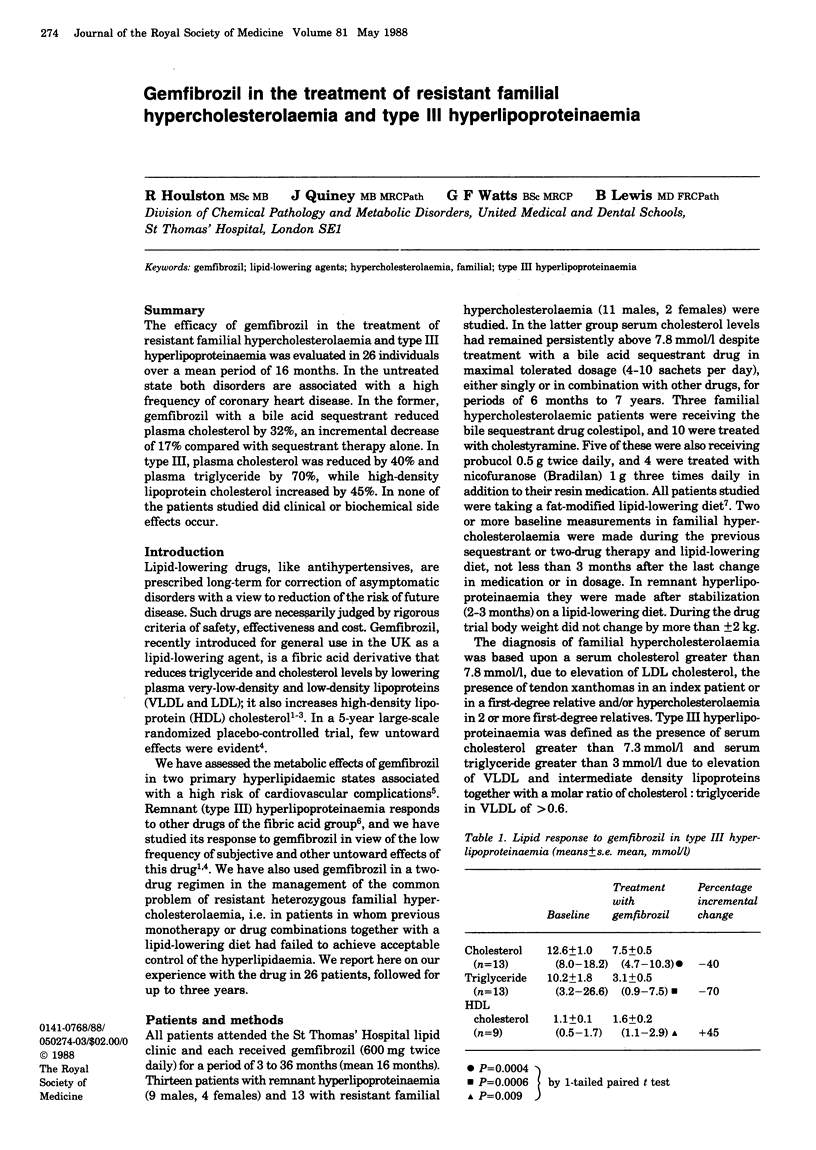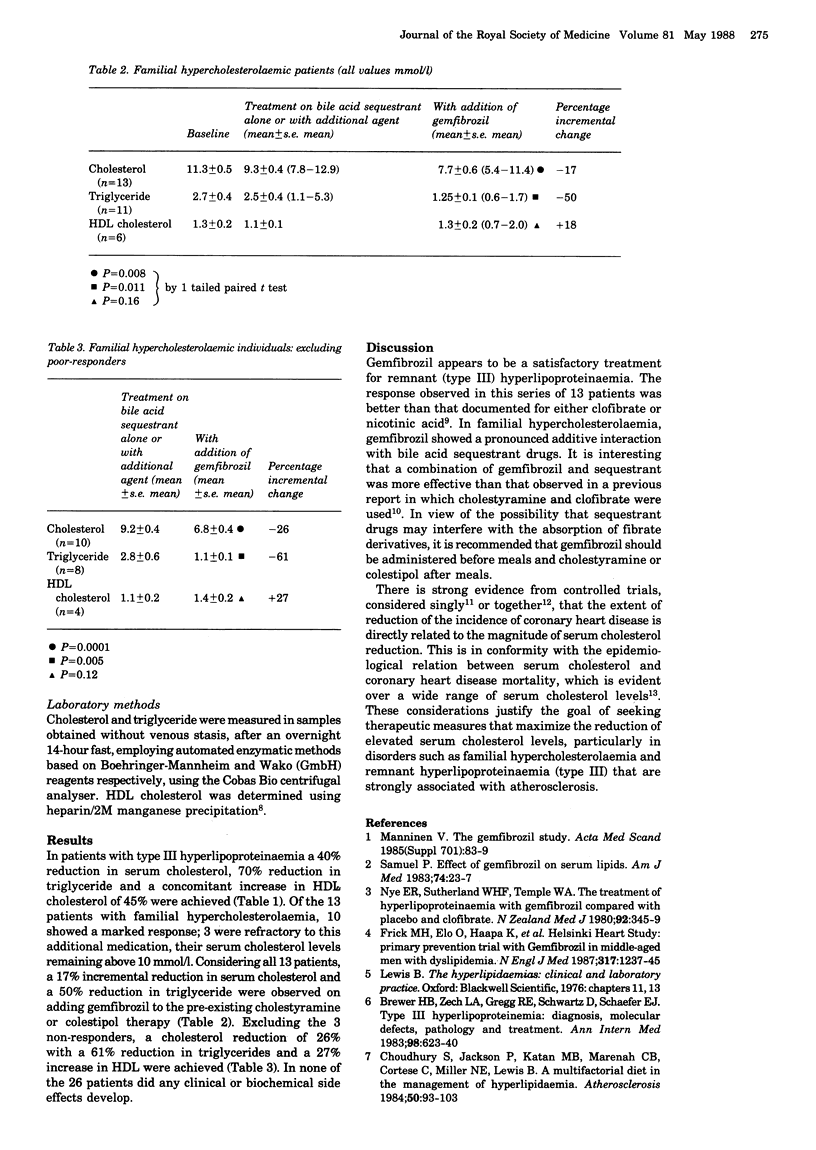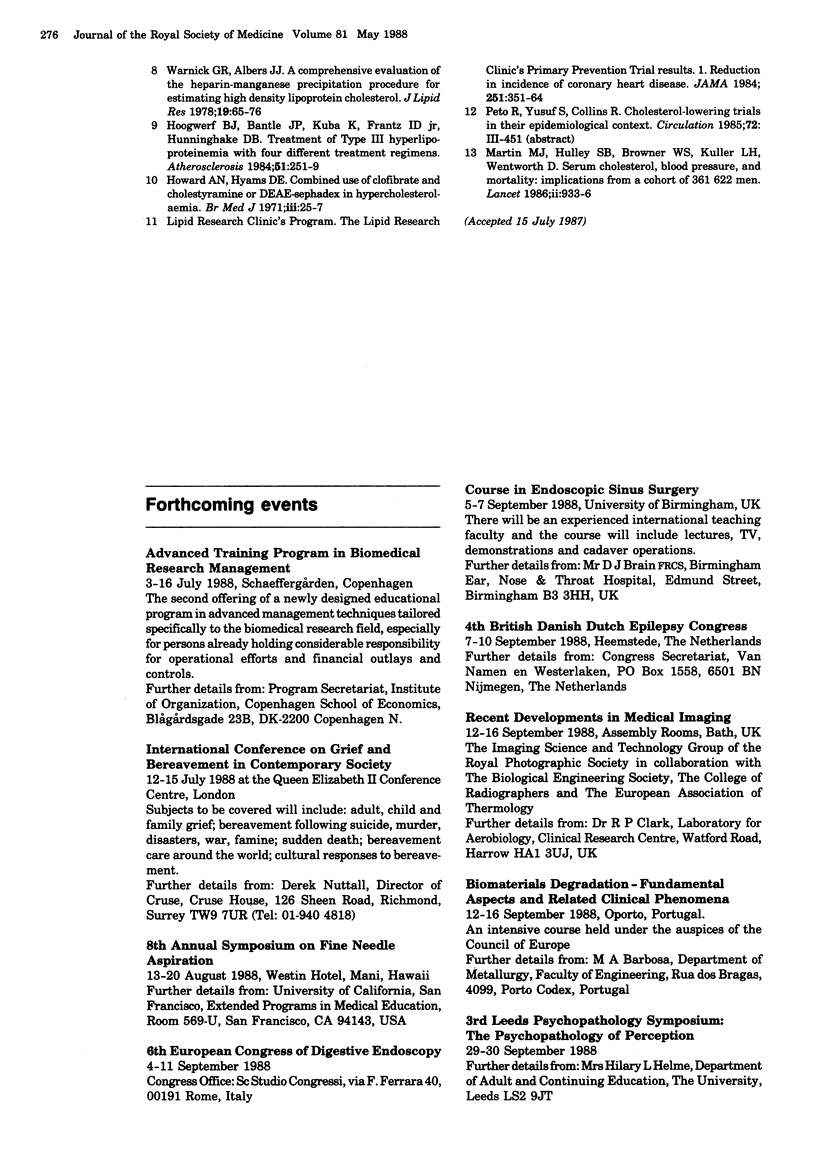Abstract
The efficacy of gemfibrozil in the treatment of resistant familial hypercholesterolaemia and type III hyperlipoproteinaemia was evaluated in 26 individuals over a mean period of 16 months. In the untreated state both disorders are associated with a high frequency of coronary heart disease. In the former, gemfibrozil with a bile acid sequestrant reduced plasma cholesterol by 32%, an incremental decrease of 17% compared with sequestrant therapy alone. In type III, plasma cholesterol was reduced by 40% and plasma triglyceride by 70%, while high-density lipoprotein cholesterol increased by 45%. In none of the patients studied did clinical or biochemical side effects occur.
Full text
PDF


Selected References
These references are in PubMed. This may not be the complete list of references from this article.
- Brewer H. B., Jr, Zech L. A., Gregg R. E., Schwartz D., Schaefer E. J. NIH conference. Type III hyperlipoproteinemia: diagnosis, molecular defects, pathology, and treatment. Ann Intern Med. 1983 May;98(5 Pt 1):623–640. doi: 10.7326/0003-4819-98-5-623. [DOI] [PubMed] [Google Scholar]
- Choudhury S., Jackson P., Katan M. B., Marenah C. B., Cortese C., Miller N. E., Lewis B. A multifactorial diet in the management of hyperlipidaemia. Atherosclerosis. 1984 Jan;50(1):93–103. doi: 10.1016/0021-9150(84)90011-x. [DOI] [PubMed] [Google Scholar]
- Frick M. H., Elo O., Haapa K., Heinonen O. P., Heinsalmi P., Helo P., Huttunen J. K., Kaitaniemi P., Koskinen P., Manninen V. Helsinki Heart Study: primary-prevention trial with gemfibrozil in middle-aged men with dyslipidemia. Safety of treatment, changes in risk factors, and incidence of coronary heart disease. N Engl J Med. 1987 Nov 12;317(20):1237–1245. doi: 10.1056/NEJM198711123172001. [DOI] [PubMed] [Google Scholar]
- Hoogwerf B. J., Bantle J. P., Kuba K., Frantz I. D., Jr, Hunninghake D. B. Treatment of type III hyperlipoproteinemia with four different treatment regimens. Atherosclerosis. 1984 May-Jun;51(2-3):251–259. doi: 10.1016/0021-9150(84)90172-2. [DOI] [PubMed] [Google Scholar]
- Howard A. N., Hyams D. E. Combined use of clofibrate and cholestyramine or DEAE sephadex in hypercholesterolaemia. Br Med J. 1971 Jul 3;3(5765):25–27. doi: 10.1136/bmj.3.5765.25. [DOI] [PMC free article] [PubMed] [Google Scholar]
- Martin M. J., Hulley S. B., Browner W. S., Kuller L. H., Wentworth D. Serum cholesterol, blood pressure, and mortality: implications from a cohort of 361,662 men. Lancet. 1986 Oct 25;2(8513):933–936. doi: 10.1016/s0140-6736(86)90597-0. [DOI] [PubMed] [Google Scholar]
- Nye E. R., Sutherland W. H., Temple W. a. The treatment of hyperlipoproteinaemia with gemfibrozil compared with placebo and clofibrate. N Z Med J. 1980 Nov 12;92(671):345–349. [PubMed] [Google Scholar]
- Samuel P. Effects of gemfibrozil on serum lipids. Am J Med. 1983 May 23;74(5A):23–27. [PubMed] [Google Scholar]
- Warnick G. R., Albers J. J. A comprehensive evaluation of the heparin-manganese precipitation procedure for estimating high density lipoprotein cholesterol. J Lipid Res. 1978 Jan;19(1):65–76. [PubMed] [Google Scholar]


